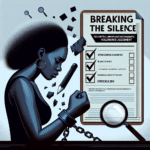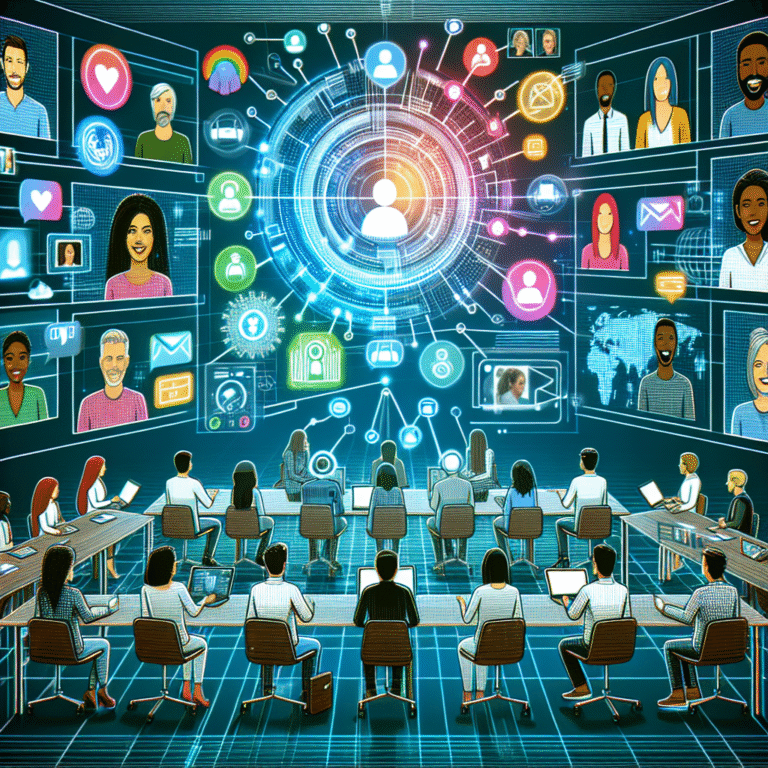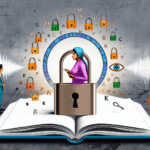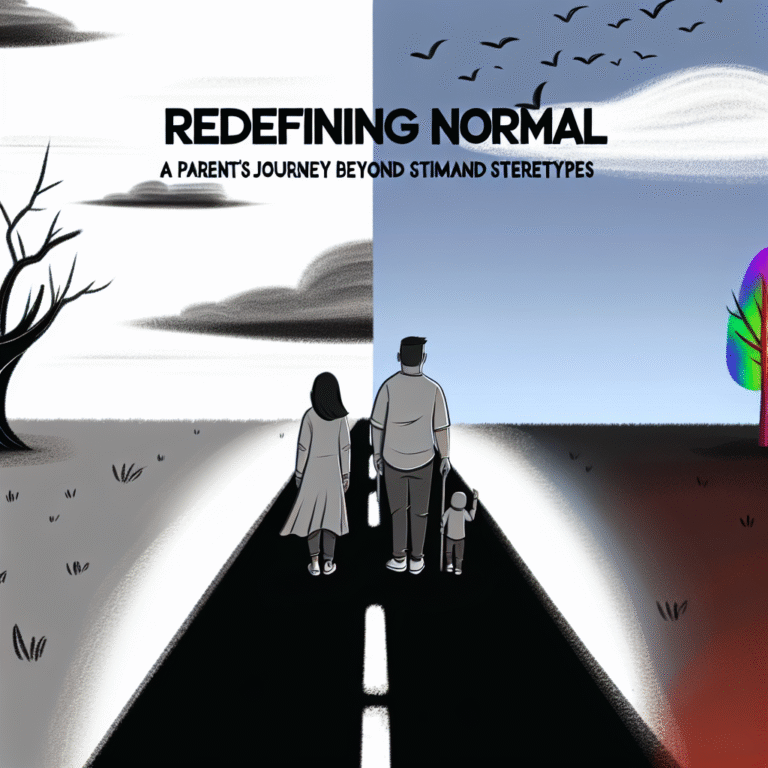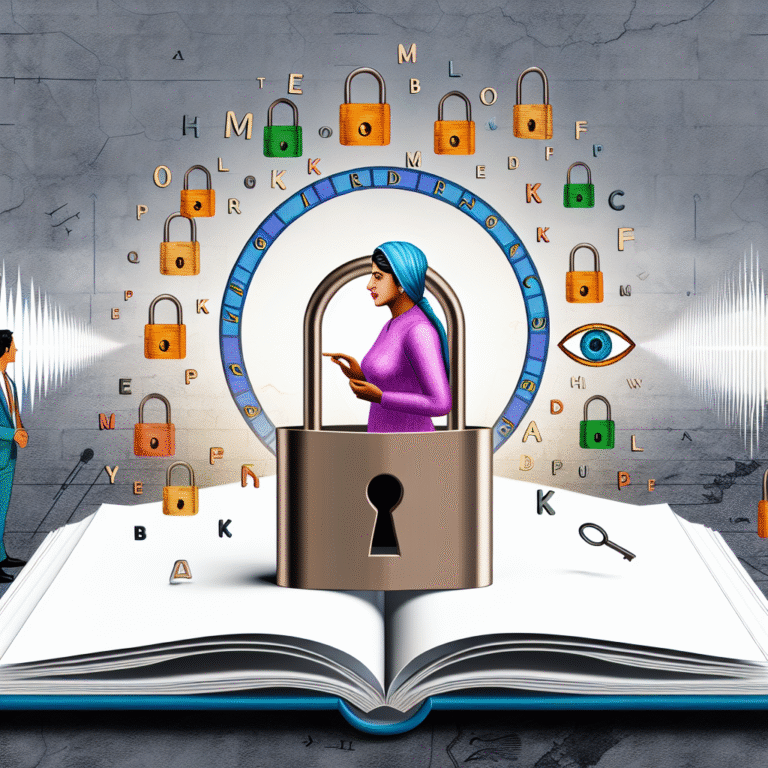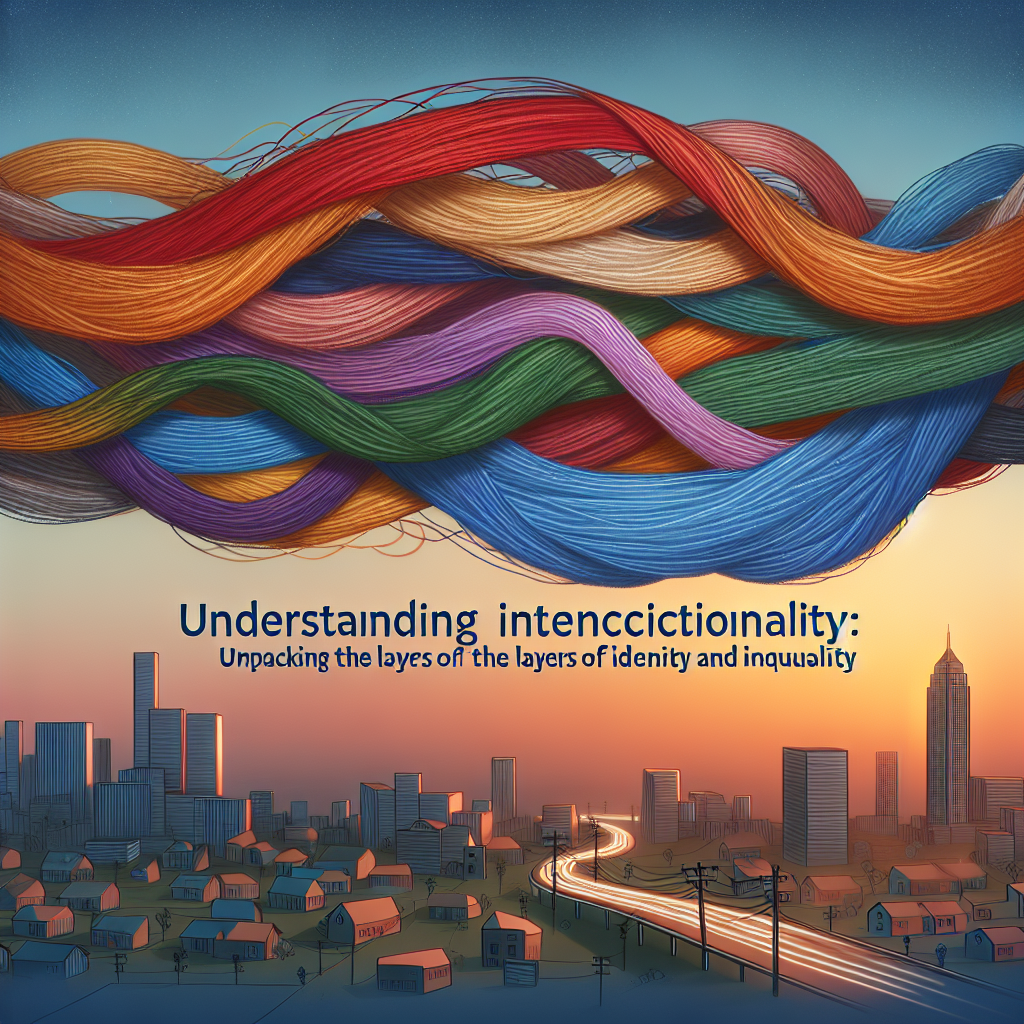
Introduction
In a world as interconnected and multifaceted as ours, the concept of identity cannot be boiled down to a single characteristic. Whether through race, gender, sexuality, class, or other facets of personal experience, each of us carries a unique tapestry of identities that shapes our perspectives and experiences—and often, our suffering. This nuance is what makes Understanding Intersectionality: Unpacking the Layers of Identity and Inequality essential in today’s discourse on social justice and equity.
Intersectionality, a term coined by legal scholar Kimberlé Crenshaw in the late 1980s, serves as a lens through which we analyze how various social categorizations intersect to create overlapping systems of discrimination or disadvantage. By recognizing the layers of identity, we can better understand the complexity of individual experiences and systemic inequalities that persist in society.
This article serves to explore the concept of intersectionality in-depth by unpacking its layers—visually, cognitively, and socially. We aim to provide unique insights, real-world applications, and actionable insights that resonate with modern audiences seeking to champion equality in their communities.
The Foundations of Intersectionality
1. Defining Intersectionality
At its core, Understanding Intersectionality: Unpacking the Layers of Identity and Inequality begins with a comprehensive definition. Intersectionality posits that individuals do not experience oppression or privilege in isolation from one another. Instead, these experiences are interdependent and compound over time. As Crenshaw articulated, the notion seeks to address how women of color, for example, face unique challenges that white women or men of color might not encounter.
Visualizing Intersectionality
A helpful way to visualize intersectionality is through the use of a Venn diagram, where each circle represents a different identity marker—race, gender, socioeconomic status, etc. The overlapping areas illustrate how these identities interact, creating complex experiences that can both exacerbate and alleviate individual struggle.
2. Historical Context
The roots of intersectionality can be traced back to various social movements, including civil rights, women’s rights, and LGBTQ+ advocacy. Each of these movements has historically addressed the overlapping layers of identity while fighting for broader social justice. Yet, they often neglected the combined effects of these identities until Crenshaw brought them to the forefront.
Case Study: The Combahee River Collective
The Combahee River Collective, a group of black feminists formed in the 1970s, directly addresses intersectionality in their statement, highlighting the unique experiences of black women. Their activism laid groundwork for recognizing how race, gender, and class intertwine, providing a crucial historical lens to the discussion of Understanding Intersectionality: Unpacking the Layers of Identity and Inequality.
3. Intersectionality in Policy Making
As we dive deeper into the nuances of intersectionality, it becomes clear that understanding these layers is paramount for effective policy-making. Policies that consider intersectionality enable more tailored solutions for marginalized groups.
Table: Intersectionality and Policy Areas
| Policy Area | Intersectional Consideration | Outcome |
|---|---|---|
| Education | Impact of race and economic status on opportunity | Targeted funding initiatives |
| Healthcare | Access issues facing LGBTQ+ persons of color | Improved health outcomes |
| Criminal Justice | Disparities based on race, gender, and income | Reform and equity measures |
| Employment | Gender pay gaps exacerbated by race | Living wage initiatives |
Understanding Intersectionality: Unpacking the Layers of Identity and Inequality in these policy areas can lead us towards more informed and ultimately more just outcomes.
The Personal Implications of Intersectionality
4. Real World Examples
To grasp the practical implications of intersectionality, consider the following modern scenarios:
Case Study: Black Women in the Workplace
In 2020, a study by the National Women’s Law Center revealed that black women earn just 63 cents for every dollar earned by white men. This pay gap demonstrates the impact of overlapping identities—race and gender—which is crucial in understanding economic disparities. Through the lens of Understanding Intersectionality: Unpacking the Layers of Identity and Inequality, we see the necessity for organizations to develop equitable pay structures.
5. Everyday Encounters with Intersectionality
Individuals encounter intersectionality not just in systemic issues but in daily life. From microaggressions to blatant discrimination, understanding and recognizing these layers can enable allies to respond effectively.
Case Study: LGBTQ+ Youth in Schools
LGBTQ+ youth, particularly those who are also Black or Latinx, often face bullying that is compounded by their diverse identities. Schools that implement comprehensive anti-bullying policies that acknowledge multiple identities can reduce victimization and improve mental health outcomes.
Intersectionality and Social Movements
6. Activism Through an Intersectional Lens
In recent years, the rise of movements like Black Lives Matter illustrates how intersectionality plays a vital role in social activism. Recognizing the variety of experiences within marginalized communities allows for a more nuanced approach, ensuring that no voice is left behind.
Case Study: The Women’s March
The Women’s March of 2017 exemplified a movement that brought together diverse identities under a single umbrella of women’s rights, yet it also faced critiques for failing to fully represent and prioritize the issues of women of color. This highlights the ongoing challenge within social movements to embody Understanding Intersectionality: Unpacking the Layers of Identity and Inequality.
7. Intersectionality in Digital Spaces
With the advent of social media, discussions surrounding intersectionality have proliferated, leading to increased activism and awareness. Empowering marginalized voices online enables more diverse narratives, while also fostering community engagement.
Table: Social Media Platforms and Intersectionality
| Platform | Engagement Type | Example Initiative |
|---|---|---|
| Hashtag Activism | #BlackLivesMatter | |
| Visual Storytelling | LGBTQ+ Awareness Campaigns | |
| Group Organizing | Intersectional Feminism Groups |
The Future of Intersectionality
8. Challenges Ahead
Though the understanding of intersectionality continues to evolve, numerous challenges still lie ahead. Misunderstandings of intersectional theory can lead to "tokenism" or superficial representations of marginalized communities.
9. Importance of Intersectionality Education
Education is vital for dismantling these misconceptions. Programs that educate individuals about intersectional theory can cultivate more compassionate and socially aware communities.
Actionable Insights
- Advocate for intersectional training in workplaces and educational institutions.
- Support organizations that prioritize intersectional approaches in their missions.
- Engage in discussions about personal identities to foster greater understanding.
Conclusion
Understanding Intersectionality: Unpacking the Layers of Identity and Inequality is not just a theoretical pursuit; it is a practical imperative for advancing equity in every strata of society. By recognizing that historical and systemic inequalities shape the unique experiences of individuals, we can work toward a future that embraces diversity and fosters understanding.
As we continue to engage in conversations about identity and inequality, let us do so with intention and empathy. Each layer represents a part of the collective human experience, and it is only through embracing these complexities that we can effect meaningful change.
FAQs
1. What does intersectionality mean?
Intersectionality refers to the understanding that various social identities—like race, gender, class, and sexuality—intersect, creating unique modes of discrimination and privilege.
2. Who coined the term intersectionality?
The term was coined by Kimberlé Crenshaw in 1989 to address the overlapping nature of social identities and systemic inequalities.
3. How can intersectionality be applied in activism?
Intersectionality can guide activists to create inclusive movements that address the unique challenges faced by marginalized communities, ensuring no voice is left behind.
4. Why is intersectionality important in policy-making?
Understanding intersectionality allows lawmakers to design policies that consider the diverse experiences of various identity groups, leading to more equitable outcomes.
5. How can I learn more about intersectionality?
Numerous resources, including books, articles, and online courses are available to deepen your understanding of intersectionality and its real-world applications. Consider starting with Kimberlé Crenshaw’s work and recommendations from organizations focused on social justice.
This comprehensive exploration of Understanding Intersectionality: Unpacking the Layers of Identity and Inequality intends to empower readers with knowledge, inspire actionable insights, and cultivate a future built on understanding and equity.

